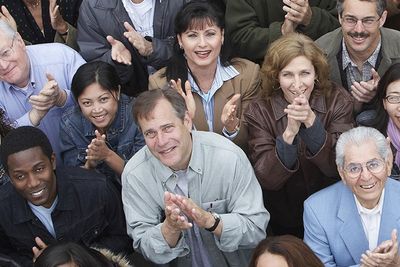Latino ethnicities are a vibrant and diverse facet of the American social fabric. According to the U.S. Census Bureau, as of 2021, individuals of Latino or Hispanic origin account for around 19% of the country's total population, making it the largest ethnic minority in the U.S.
It is essential to note that the Latino community is not monolithic, and there's a rich tapestry of unique cultures, traditions, and languages under the umbrella of this designation. Latino is not a racial category, but an ethnicity, and includes individuals from more than 20 different countries primarily located in Latin America.
In this overview, we spotlight key details on the geographical distribution and unique cultural demographics of the U.S. Latino population:
Mexican
People of Mexican origin constitute the largest Latino ethnicity in the United States, representing roughly 60% (or about 37.2 million people) of the Latino population and about 11.4% of the total U.S. population. They trace their roots back to Mexico, and this community has had a long and complex history intertwined with that of the United States, especially in states such as California, Texas, and Arizona.
Puerto Rican
Puerto Ricans represent the second-largest Latino ethnicity, at 5.8 million, accounting for around 9.3% of the Latino population. Since Puerto Rico is a U.S. territory, Puerto Ricans are U.S. citizens by birth, leading to significant migration between the island and the mainland.
Salvadoran
Tracing their roots to El Salvador, Salvadoran Americans are the third-largest Latino group, constituting roughly 4% of the Latino population. Many Salvadorans migrated to the U.S. during and following the Salvadoran Civil War in the 1980s.
Cuban and Dominican
Cuban Americans represent about 3.8% of the Latino population. Many early Cuban immigrants came after the Cuban Revolution in 1959, with subsequent "waves" in the 1980s (Mariel Boatlift) and 1990s (the Balsero Crisis).
Dominican Americans also account for about 3.8% of the Latino population. Many immigrated during periods of political instability in the Dominican Republic and have since formed significant communities, particularly in New York City.
Guatemalan
Guatemalan Americans represent about 2.8% of the Latino population. The civil war in Guatemala during the 1980s and early 1990s led to significant migration to the U.S.
Colombian
Colombian Americans account for about 2.2% of the Latino population. Many Colombian immigrants came to the U.S. due to the longstanding internal conflict in their home country.
The remaining percentages of the Latino population in the U.S. include a diverse range of smaller groups from countries such as Honduras, Peru, Nicaragua, Ecuador, Venezuela, Panama, Costa Rica, Chile, Bolivia, Uruguay, Paraguay, and Argentina.
In terms of growth rates among Latino populations in the U.S., those with origins in Venezuela, the Dominican Republic, Honduras, and Guatemala have experienced the most rapid increase.
The Venezuelan-origin population in the U.S. experienced an explosive growth of 172% from 2010 to 2021, increasing to 660,000, marking the fastest growth rate among Latino ethnicities. Notably, three other Latino groups saw their population increase by over 50% during the same period. The Dominican population grew by 59%, while Hondurans and Guatemalans saw their numbers rise by 57% and 53%, respectively.
These significant shifts underscore the ever-evolving tapestry of Latino communities within the U.S. and their continually increasing impact on the nation's cultural, social, and economic life.
The dynamism and diversity of Latino ethnicities in the United States tell a profound story that is deeply intertwined with the history and future of the nation. As this landscape continues to evolve, it will be increasingly important to understand and appreciate the distinct narratives, cultures, and experiences that comprise the Latino community. Each demographic shift, each wave of growth, isn't just a statistic but a reflection of lives lived, dreams pursued, and contributions made to the richly diverse American society.
The vibrancy and resilience of these communities serve as a powerful testament to the enduring allure of the American dream, reminding us that the nation's strength lies in its diversity and the continual reimagining of its identity. This collective narrative emphasizes that the Latino community in the United States is not just an integral part of American society but an indispensable chapter in the ever-unfolding American story.
Amid rapid demographic changes and cultural evolution, one thing remains certain: Latino ethnicities will continue to shape the face of America, contributing to its cultural richness, economic vitality, and social dynamism. As we move forward, it's clear that the Latino community will play a significant role in defining what it means to be American in the 21st century and beyond.
- 3 Reasons to Consider Dual American/Mexican Citizenship and How To Do It ›
- Must-Visit Latino Historic Sites in the U.S. - Luz Media ›
- Identity Labels 101: Hispanic, Latino, Latinx, and More - Luz Media ›
